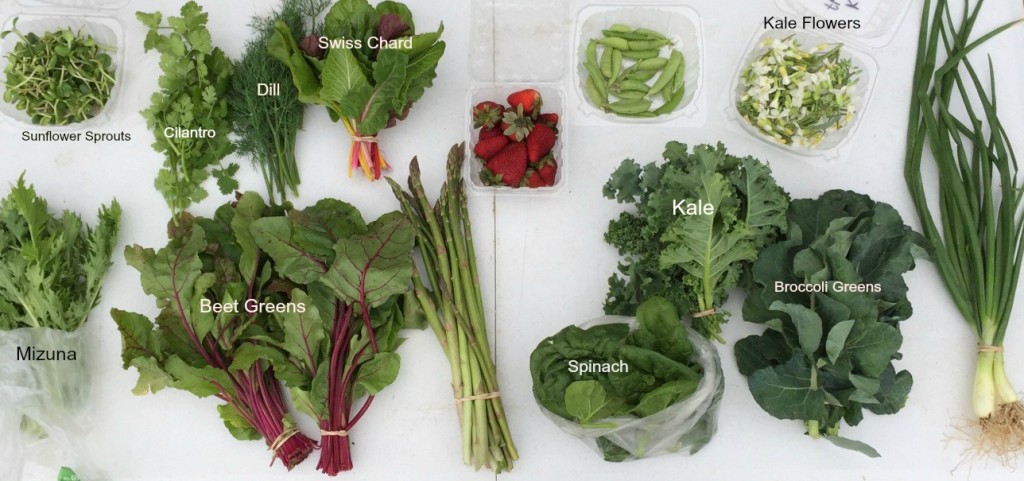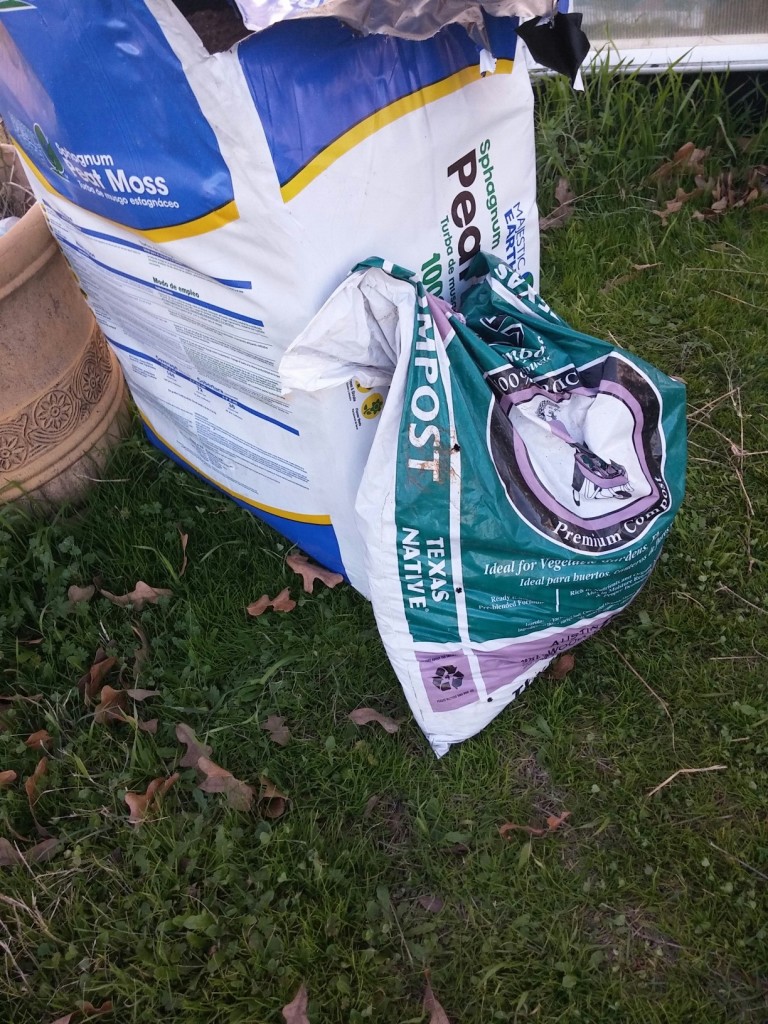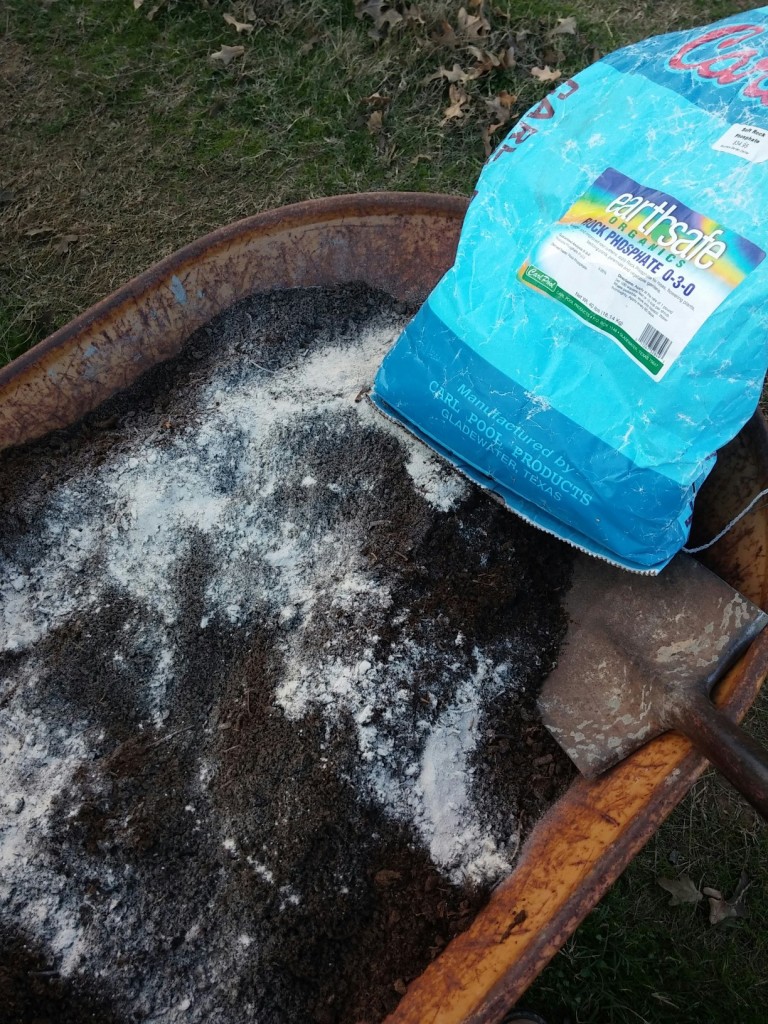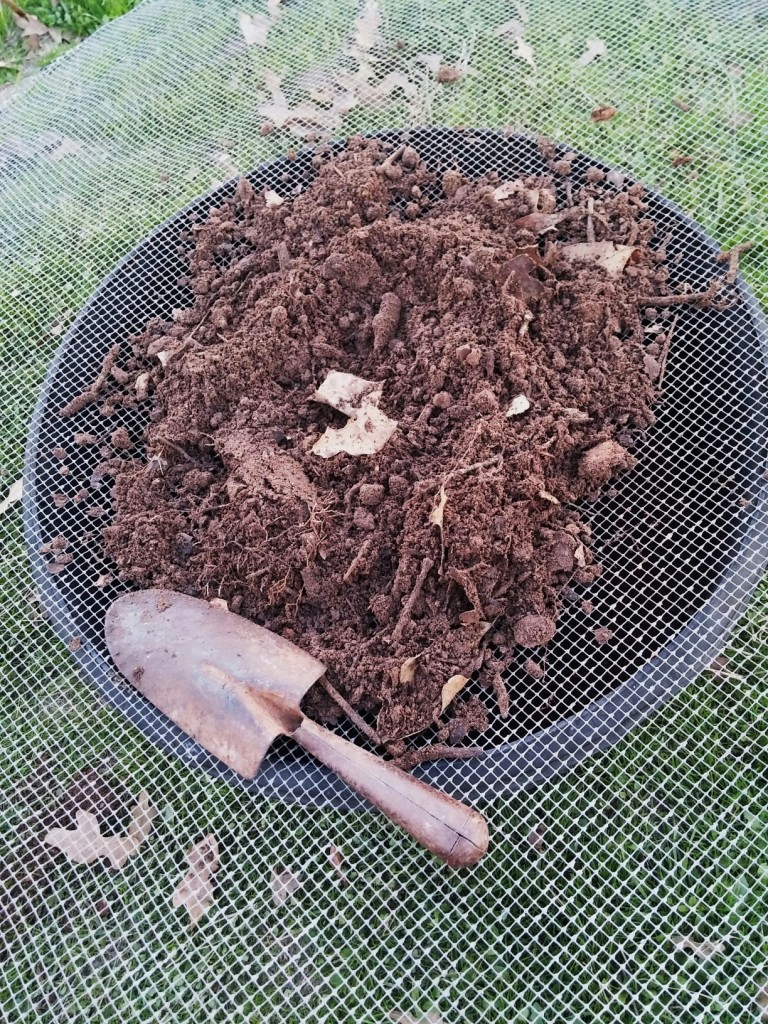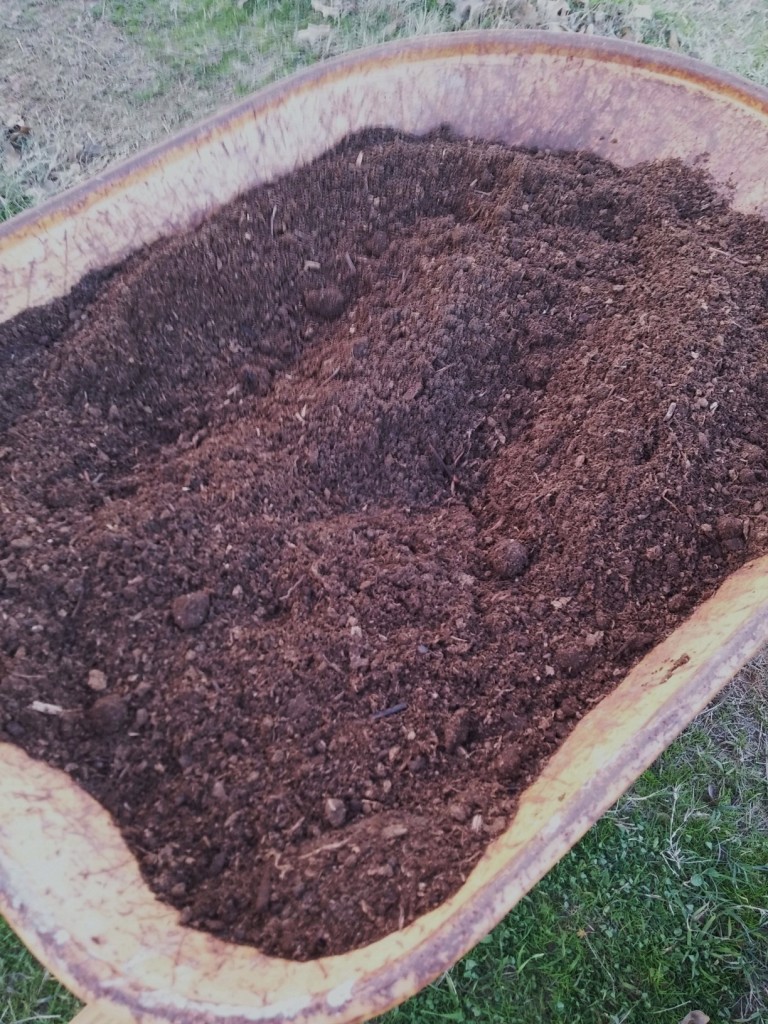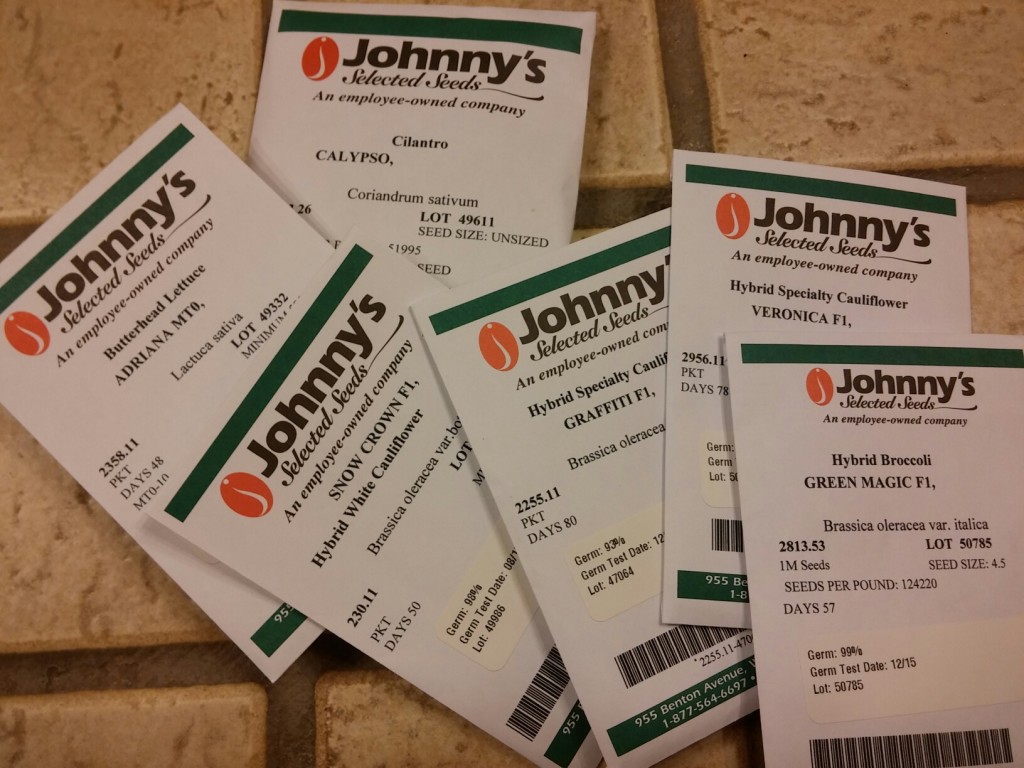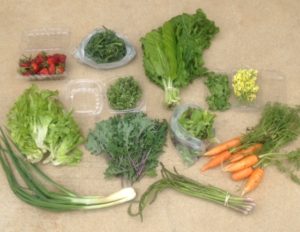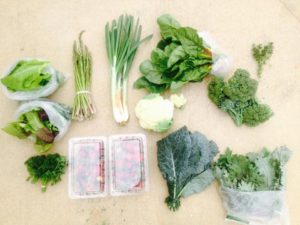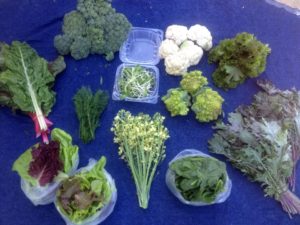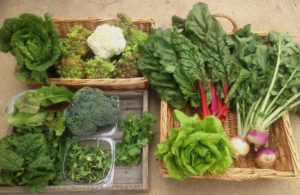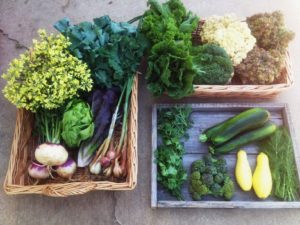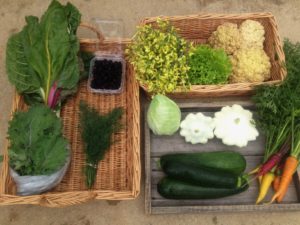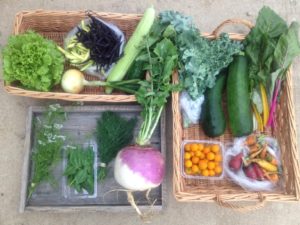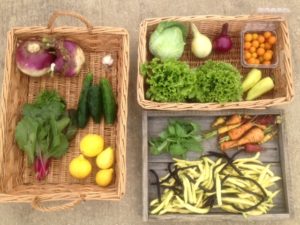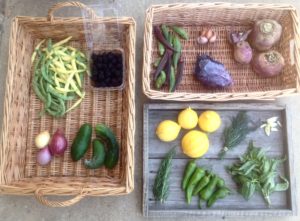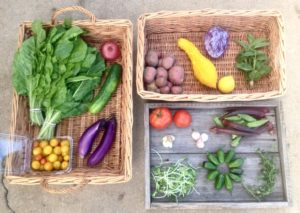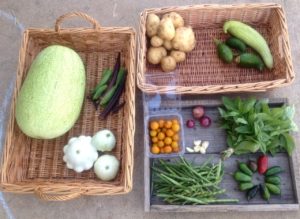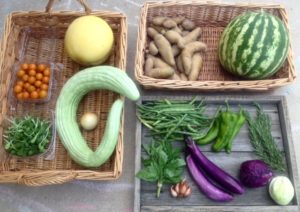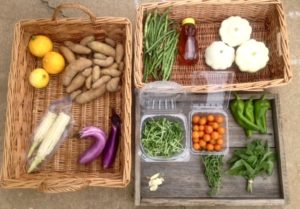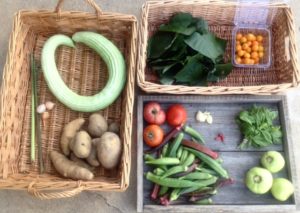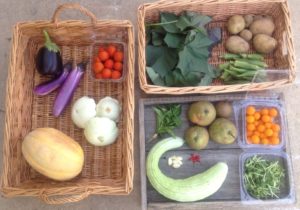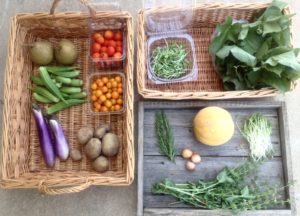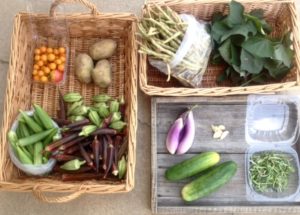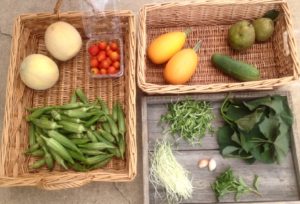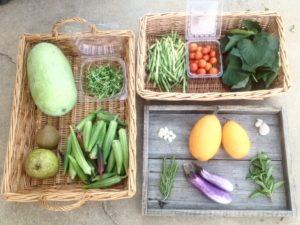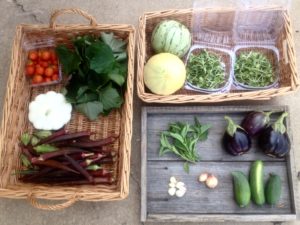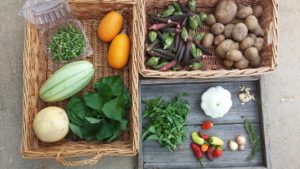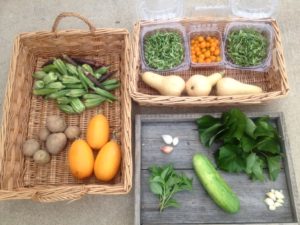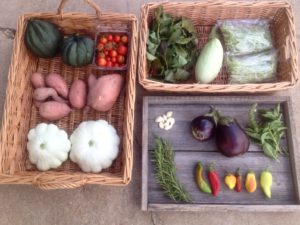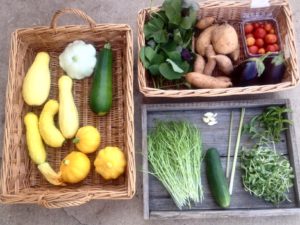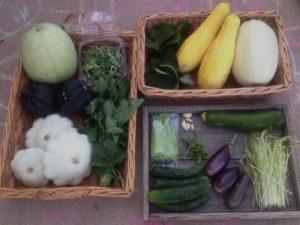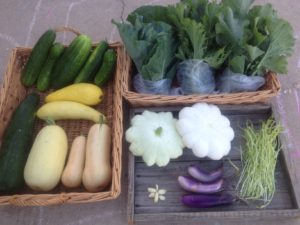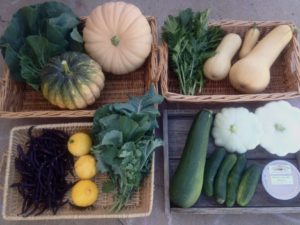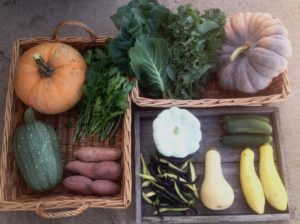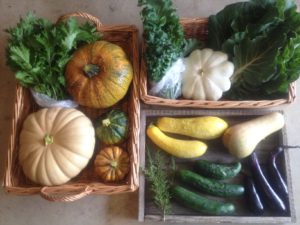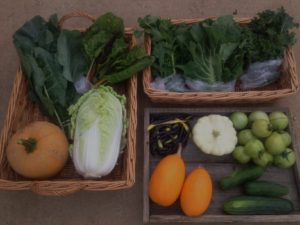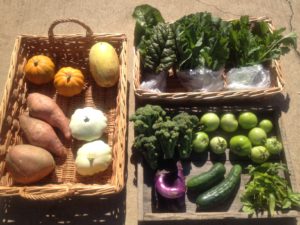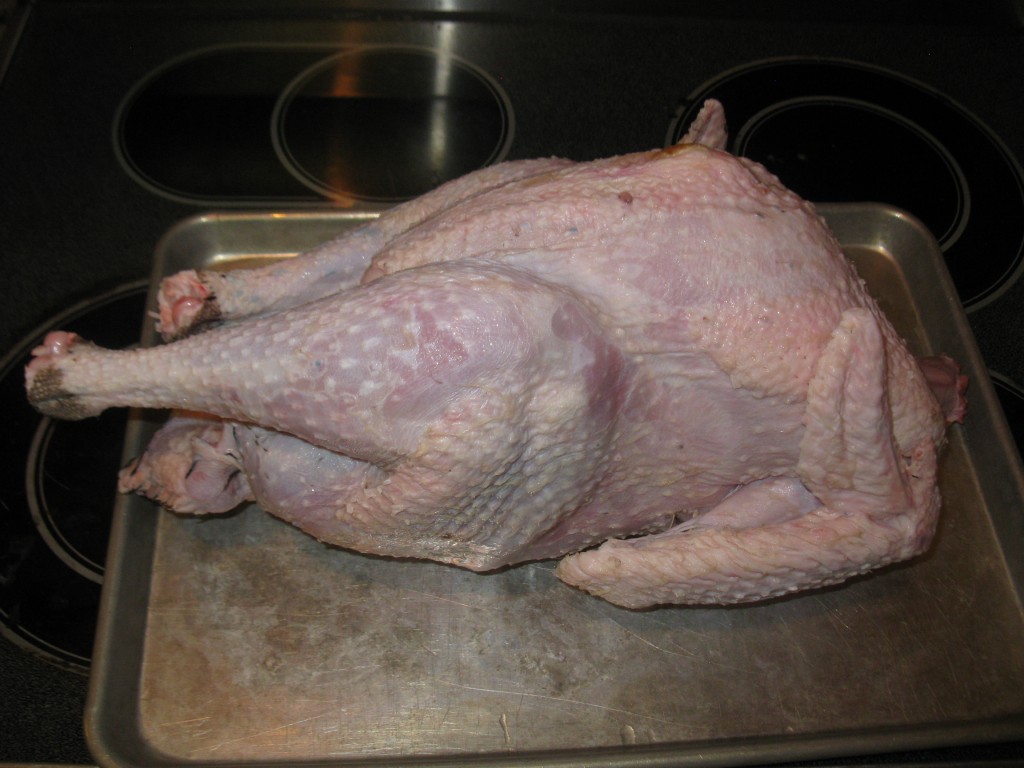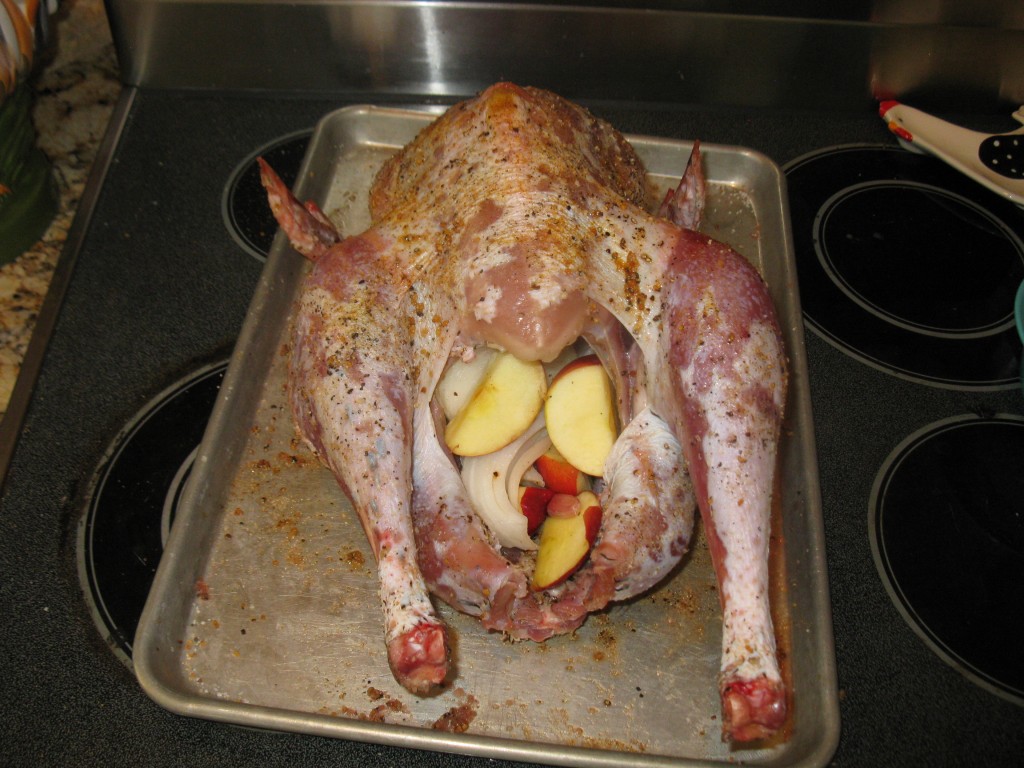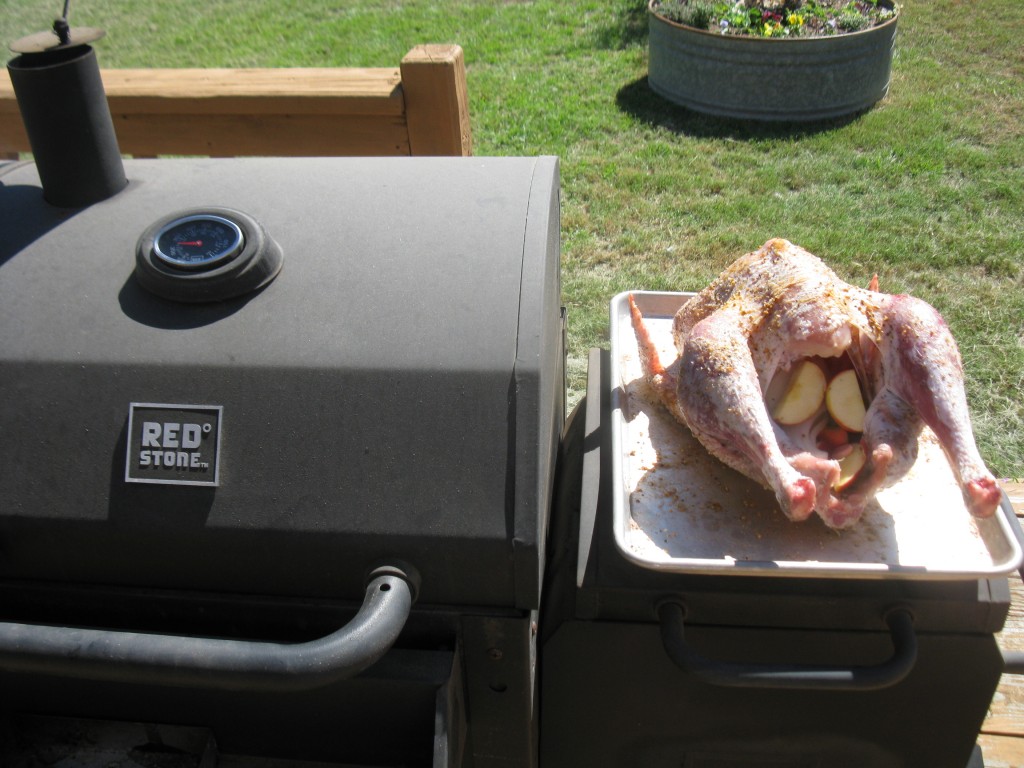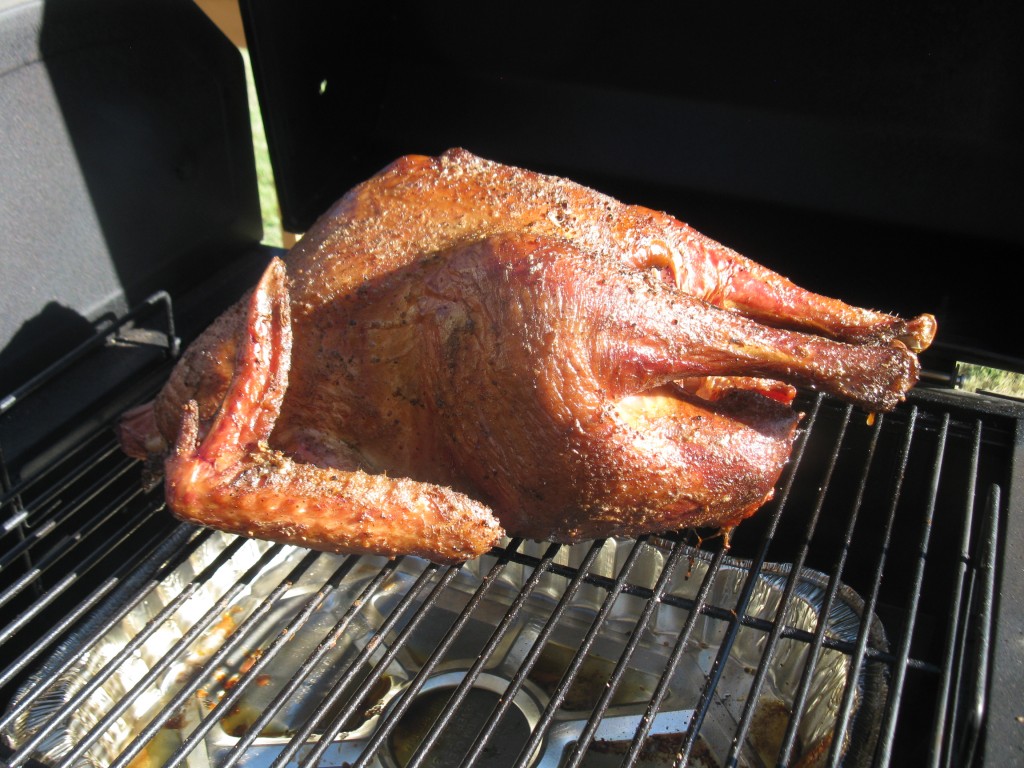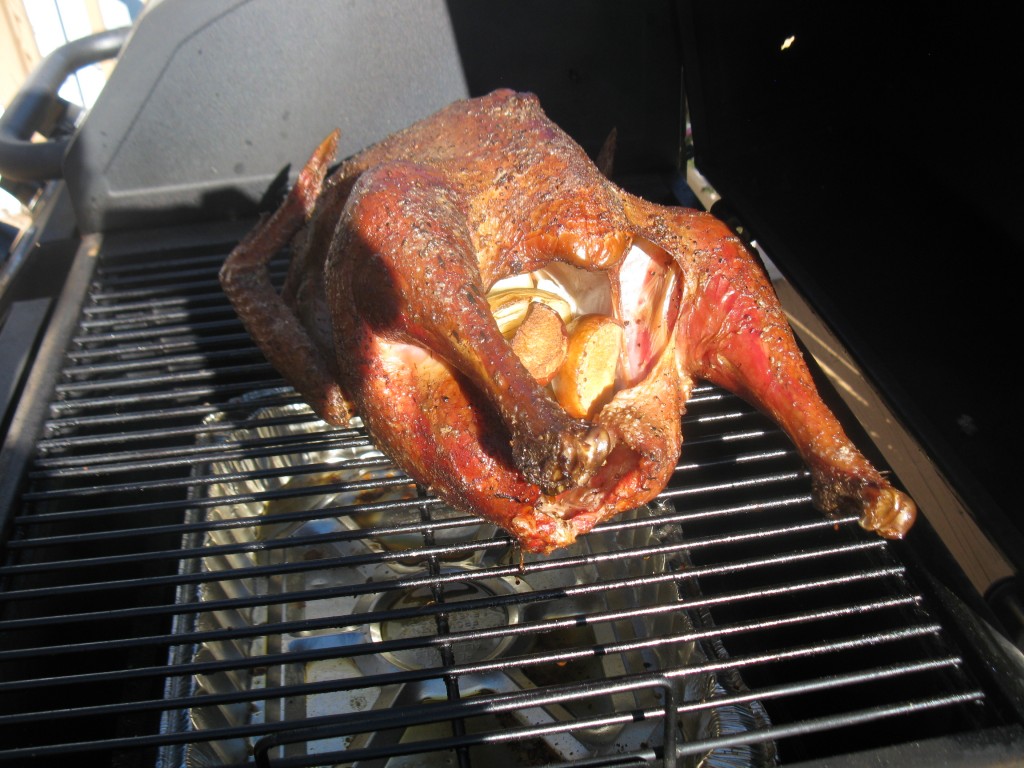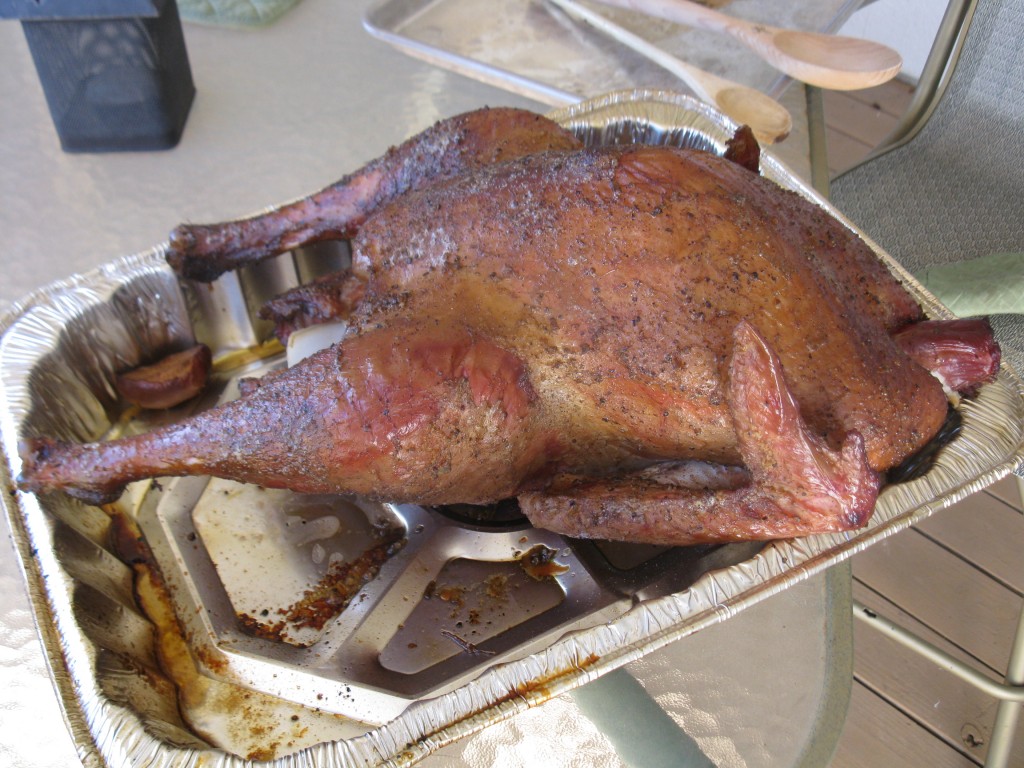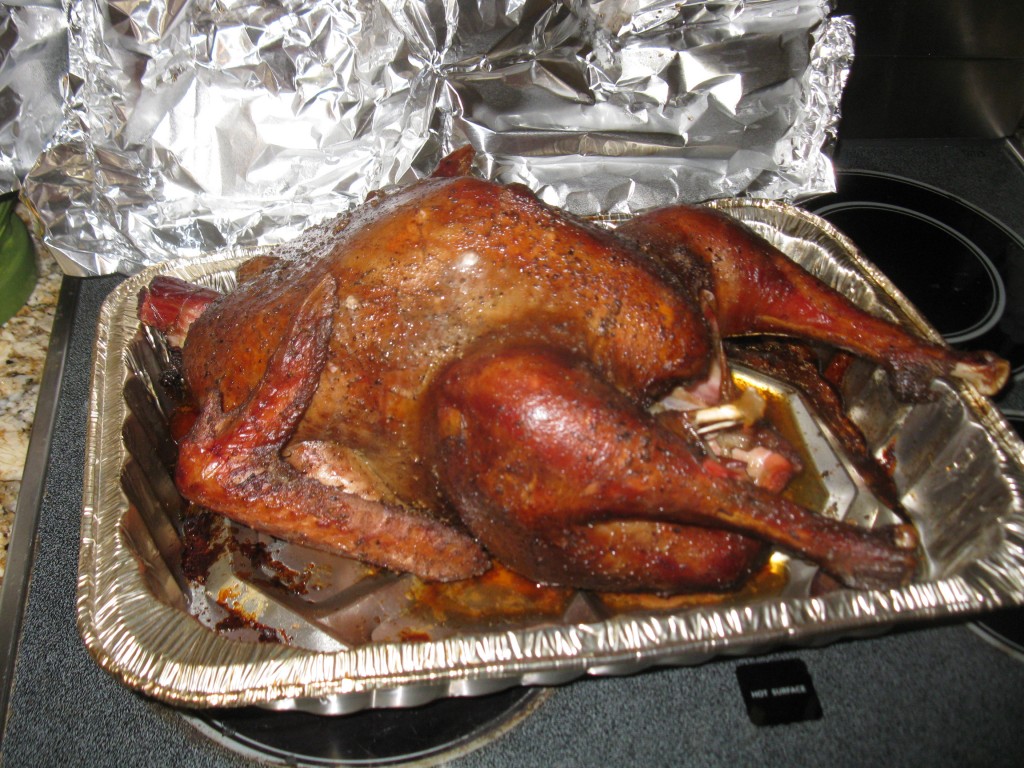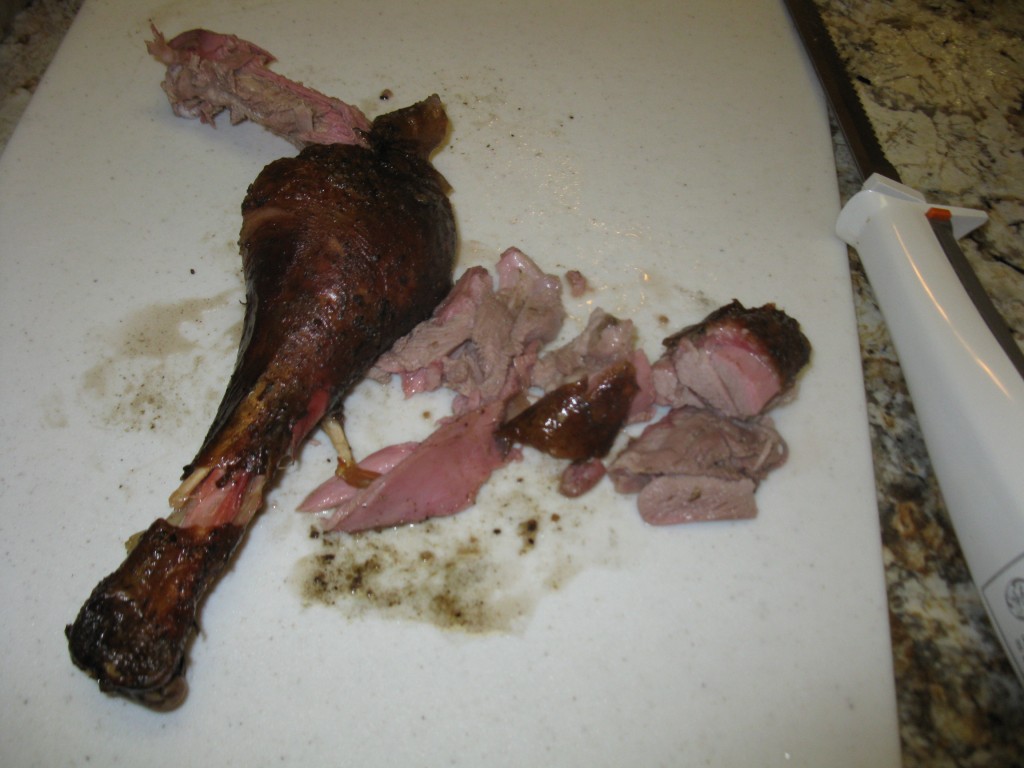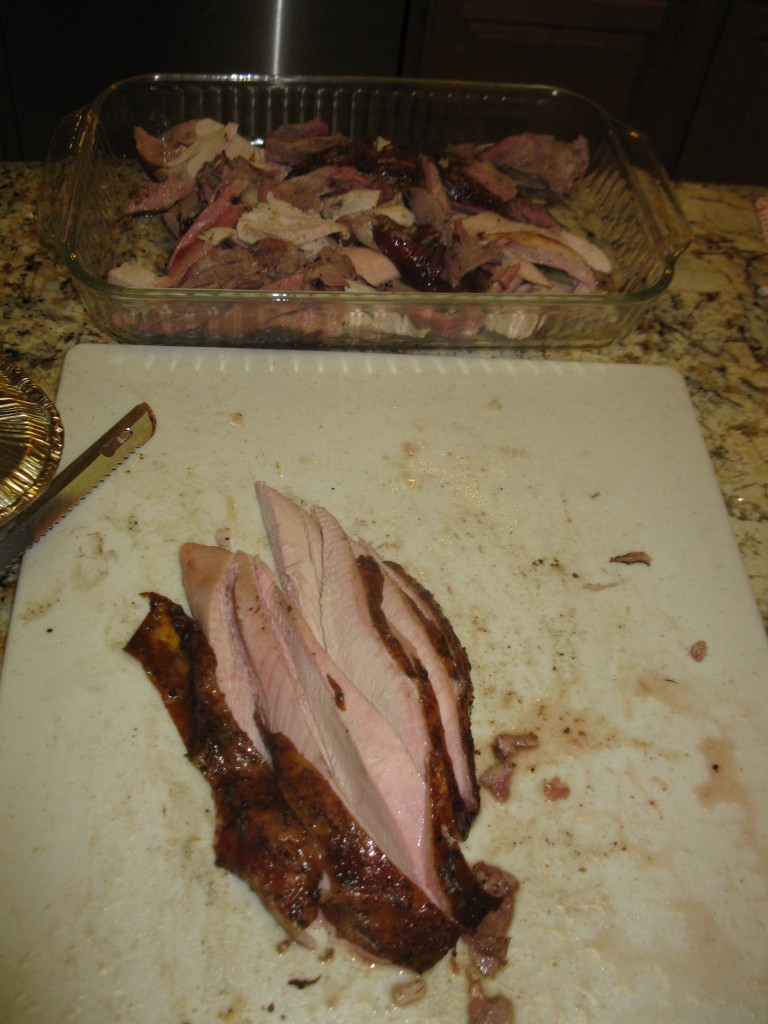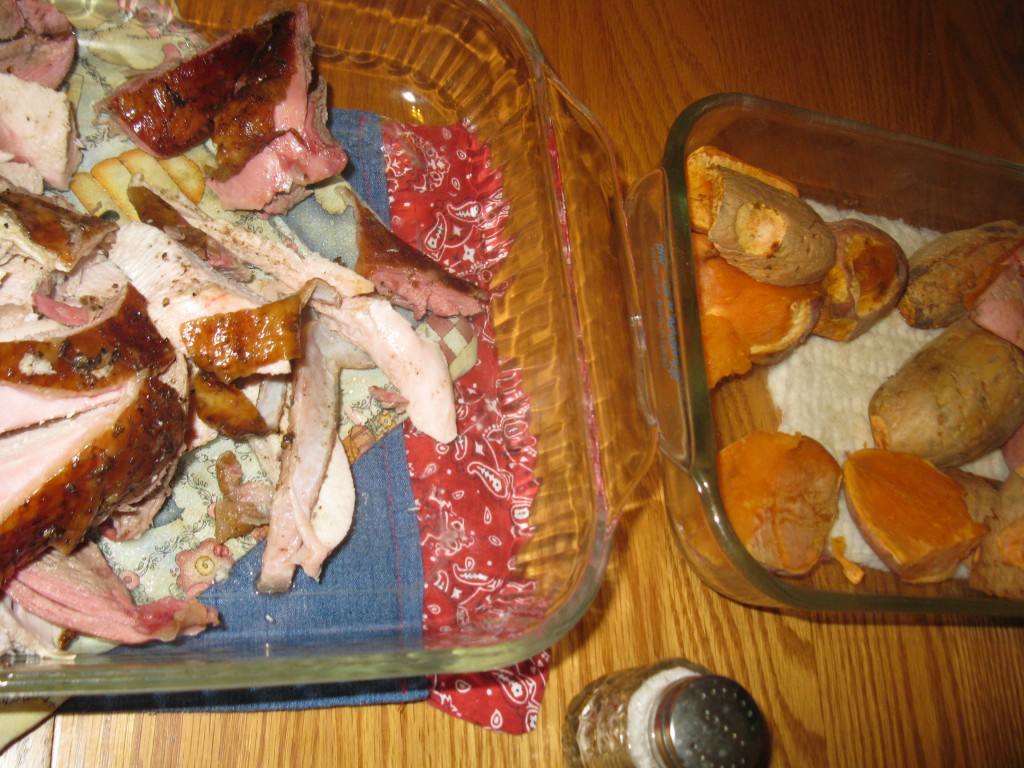Please see the latest update for details on this year’s season
Blessing Falls LLC grows natural, safe, healthy vegetables and fruit using organic methods and practices and delivers the harvest throughout the greater Austin area. Our family farm was established in 2010, each year adding more garden space and different varieties of vegetables, herbs, fruit trees, berries, and animals. For 2016 we’ve enhanced our garden soil with several truckloads of compost and we hope to have plenty of harvest to share with the greater Austin area. Partner with us and enjoy the health and taste of natural produce in your weekly farm share conveniently delivered to your home or workplace. Grass fed beef and pasture-raised eggs from organically fed hens are also available with your weekly order.
“Community Supported Agriculture”, or CSA, means farmers and supporters partnering together for the sake of healthy, nutritious food. Supporters join as members, paying the farm expenses early in the season when costs are highest. As the crops mature, all members enjoy sharing in the harvest. This community of farmer and members benefits everyone – costs and risks are shared and none of the harvest is wasted but goes directly to waiting members as soon as it’s harvested. You may think of it as a subscription to fresh, natural food. Costs are paid early and the bounty is enjoyed every week. Click here to join our CSA now or continue reading for all the details.
Season Schedules
In the greater Austin area throughout 2016 we plan 3 seasons:
Spring: 10 weeks March 28 – June 4
Summer: 10 weeks June 6 – August 13
Fall: 10 weeks September 12 – November 19
Note there is a 4 week break between Summer and Fall. By late July, we’ll have an idea of what harvest is available during this hottest part of summer and hope to offer 2016 CSA members a ‘mini-season’ during this period.
We’re planning a Winter season past November 19 and will have details on that during the Fall. It’s our intention to offer weekly shares year-round throughout winter and early spring in 2016/2017.
Weekly Shares
Members decide if they want a full share or just a half. The full share works well for 3 to 6 adults/teens, while the half share works best for couples and families with only young children. To give you an idea, here are four full shares from our CSA last year…
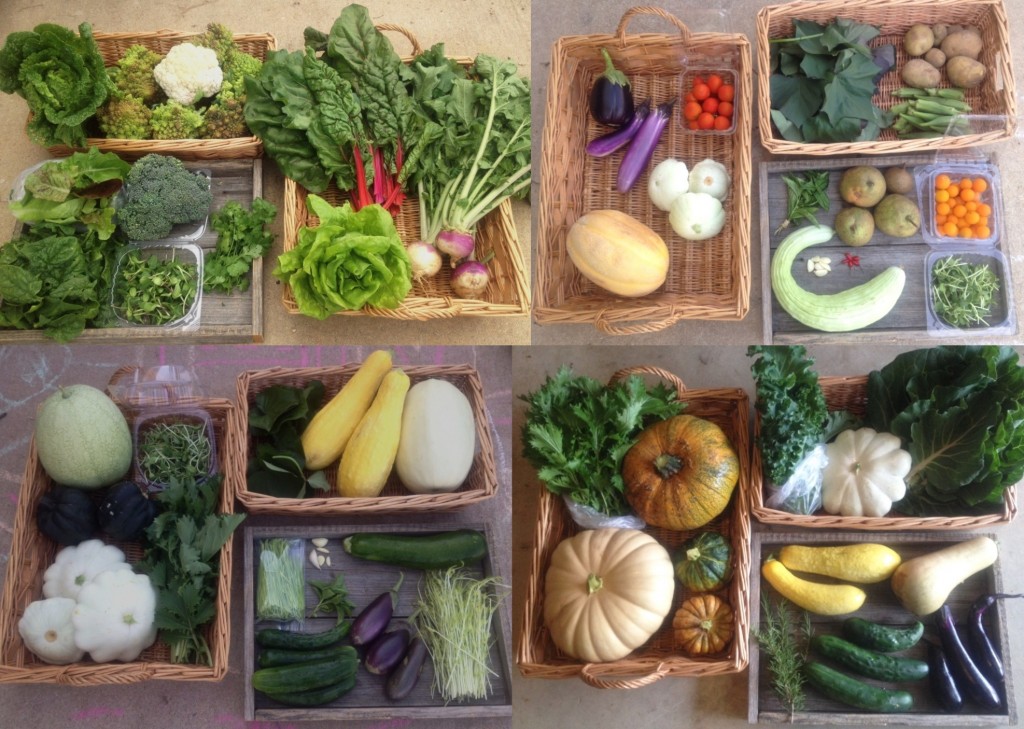
CSA Full shares from 2015, top: Spring, Summer; bottom: Early Fall, Late Fall
For more examples, see our 2015 “CSA at a Glance” showing shares from every week of harvest. Note these are all Full size shares, with Half size shares generally having half as much produce each week.
The harvest varies throughout each season. Here’s what we’re planning this year:
Spring: asparagus, lettuce, kale, Swiss chard, radish, Chinese cabbage, micro greens, sunflower sprouts, red and green cabbage, broccoli, cauliflower, mizuna, spinach, carrots, turnips, cilantro, peas, beets, onions, dill, cucumbers, yellow squash, blackberries, tomatoes, garlic, zucchini, green beans, blackberries, edible flowers
Summer: onions, dill, cucumbers, Swiss chard, Malabar spinach, yellow squash, tomatoes, garlic, cabbage, zucchini, green beans, cantaloupe, jalapeños, Italian peppers, basil, various squash varieties (spaghetti, lemon, scallop, acorn), eggplant, watermelon, sweet corn, pears, black eyed peas, okra, bell peppers, Thai peppers, sweet potato leaves, butternut squash, edible flowers
Fall: pumpkins, several varieties of summer and winter squashes, dill, tomatoes, eggplant, beans, sweet peppers, jalapeños, popcorn, okra, melons, Chinese cabbage, lettuce mix, mizuna, sweet potatoes and sweet potato leaves, radishes, greens, cucumbers, edible flowers
Delivery/Pickup
We’ll deliver your weekly share to your home or workplace in the greater Austin area – From Downtown Austin to Georgetown; Westlake to Elgin; Taylor to Liberty Hill and points between we’ve got you covered. No need to meet us at a specific time and you do not need to be home. If you won’t be home or don’t want to be interrupted just leave an ice chest and we’ll deliver your produce between noon and 5:00pm on your scheduled day. If you’d prefer to pick up your share, Svantes Restaurant is partnering with us as a pick-up location where you can pick up from 4pm until 10pm Wednesdays or Saturdays. Corrective Chiropractic on Bee Cave Rd near 71W hosts a Wednesday afternoon pick-up. You can also pick up at the farm or Redeemer Presbyterian Church. Most items you’ll receive will have been harvested within the previous 24 hours. Some are harvested the same morning we deliver so your share is as fresh as possible.
Cost
No price increase from 2015 – our costs are the same as last year. Weekly cost for a full share is $36 and a half share is $24. Home/workplace delivery is $4 per week and there’s no charge for picking up at any of the regular sites. We offer discounts when you sign up for more than one season and also for early payment. You can mail us your check or go online and pay with your PayPal account or any credit card.
We offer substantial discounts for those who sign up a month before a season starts. The CSA sign up page is updated weekly to reflect the remaining weeks in the season and available discounts.
Ready to Join Us?
Simply fill out this form and we’ll get right back to you with a confirmation and details on how to make your payment.
FAQ – Frequently Asked Questions
Where exactly can you deliver?
The map shows our general delivery area – click here for a detailed interactive map. The north (green) and southwest (gray) sections shows Wednesday deliveries, the south (blue) shows Saturday’s routes. Areas include:
Austin – South Austin, Rollingwood, South Congress, Westlake, Aboretum, Domain, Wells Branch
Pflugerville, Hutto, Coupland, Taylor, Thrall
Manor, Elgin
Round Rock, Georgetown
Cedar Park, Leander, Liberty Hill
Lakeway, Bee Cave – Free pick-up near 71w & Bee Cave Rd, at Corrective Chiropractic
Areas on the map are approximate – if you’re near these, contact us and we’ll probably be able to work something out.
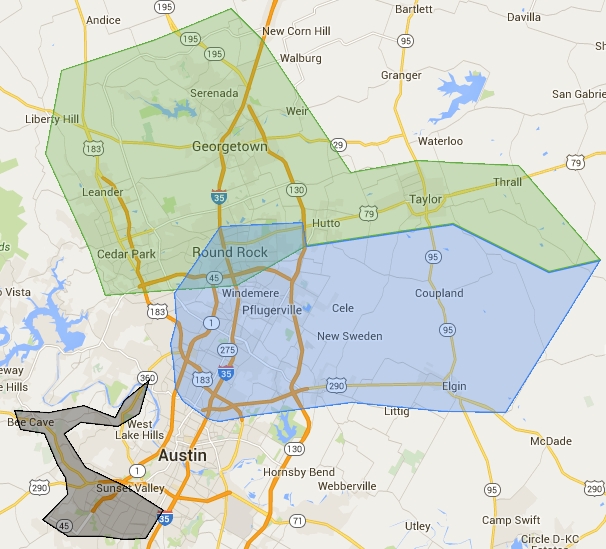
Our current pick up sites are the farm (located between Thrall and Elgin), Svantes restaurant in downtown Round Rock, Corrective Chiropractic on Bee Cave Rd, and Redeemer Presbyterian Church near the UT campus. More may be added depending on the locations and schedules of members who join.
Am I guaranteed plenty of produce each week? What if crops fail?
Our goal is to deliver an abundance each week, so that you have plenty and even some left to share with friends and neighbors. However, the harvest can vary according to weather, insect pressure, etc. It could even fail due to a hailstorm or other uncontrollable events. In our 6 year history we have not experienced a large crop failure but it’s always possible. If the harvest is low on a given week, it will usually bounce back the next. A cold front or storms can affect the harvest but it usually comes back strong. If harvest lags significantly, we’ll supplement shares with healthy, safe, natural produce we’ll buy from other local farmers we know and trust. If we were to have a ruinous failure affecting the whole season such that we are unable to continue harvesting, we will credit your undelivered shares toward the next season.
Can I pick and choose what I receive in my weekly share?
Members do not choose specific varieties for their share but will receive an assortment of whatever is ripe for harvest during the week. We’ll make sure you have enough of a particular variety so you can prepare a whole dish with it. We focus on growing the usual, typical, mainstay vegetables and also some that may be unfamiliar. We publish recipe ideas each week and have more ideas from previous seasons. We trust you’ll enjoy the adventure of trying a few new things each season. In the rare event that you receive something you don’t like or can’t use, please share those with friends.
What other farm products are available?
We have farm eggs and grass fed beef that you can add to your weekly produce share. We offer baked goods and honey on some weeks and are planning to raise holiday turkeys to be ready in November. Our members will be notified when these extra items are available. Simply mail your payment, pay online, or leave it with your delivery cooler to cover the cost and we’ll deliver these when we bring your weekly share.
Can I visit the farm?
Certainly! As a valued member and partner you are welcome to come see your produce as it grows, along with the farm cattle, chickens, and turkeys. The 2nd Tuesday morning of every month we are open for members to come out and help with weeding, planting, and general garden chores – or just watch and learn if you prefer. You’re welcome on other days too – just contact us first so we can be sure we’re on the farm that day. When you visit, you can take home a bouquet of fresh flowers from the garden too. You can always come pick up your share at the farm Wednesdays at 1pm, even if you are normally receiving deliveries, and have a look around while you’re here.
What if I’m not home to receive my delivery?
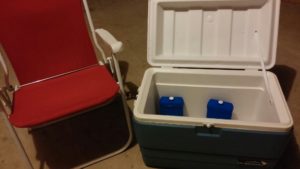 Simply leave an ice chest near your front door or some other designated shady spot. A medium sized 48 quart chest with a couple freezer packs or frozen water bottles will hold a full share, eggs, and beef and keep it cool all afternoon and possibly even overnight.
Simply leave an ice chest near your front door or some other designated shady spot. A medium sized 48 quart chest with a couple freezer packs or frozen water bottles will hold a full share, eggs, and beef and keep it cool all afternoon and possibly even overnight.
If I am out of town for a week, can I skip my delivery or pickup?
Since the produce harvest keeps coming and cannot be stored more than several days, we cannot skip or defer CSA produce shares. We will gladly deliver your share to an alternative address within our delivery area. Your share could be a welcome gift to a local friend or you could have them pay you for it. We can also donate your produce share to a community food pantry.
Since eggs and beef are more easily stored and preserved, we can defer delivery of these. For example, if your weekly order includes a full share of produce, 2 dozen eggs, and 2 pounds ground beef then we could deliver the produce to a friend and keep the eggs and beef. When you return the following week you’d get 4 dozen eggs and 4 pounds of ground beef. So you would not lose any eggs or beef you’ve paid for. Of course, you can have us deliver the eggs and beef to your friend – your choice.
How do members and the farm stay in touch?
In addition to the farm website and Facebook page, we’ll email our members weekly reminders. The email will remind you of your day of delivery and give more details on the items in that week’s share. To contact us you can simply reply to these emails or contact us through the website or call the phone number we make available to all our members.
More questions? Just let us know. When you’re ready to join us, simply fill out this form and we’ll get right back to you with a confirmation and details on how to make your payment.

